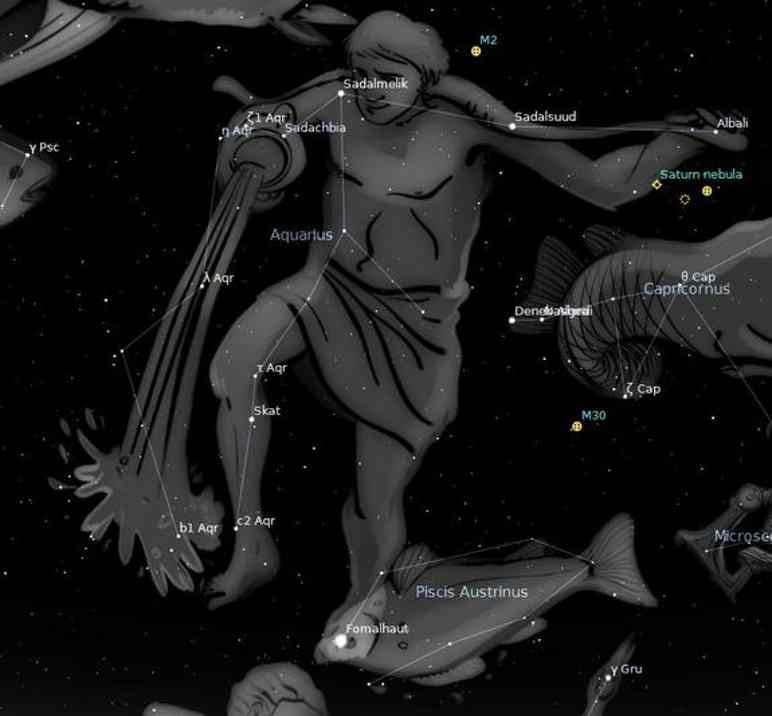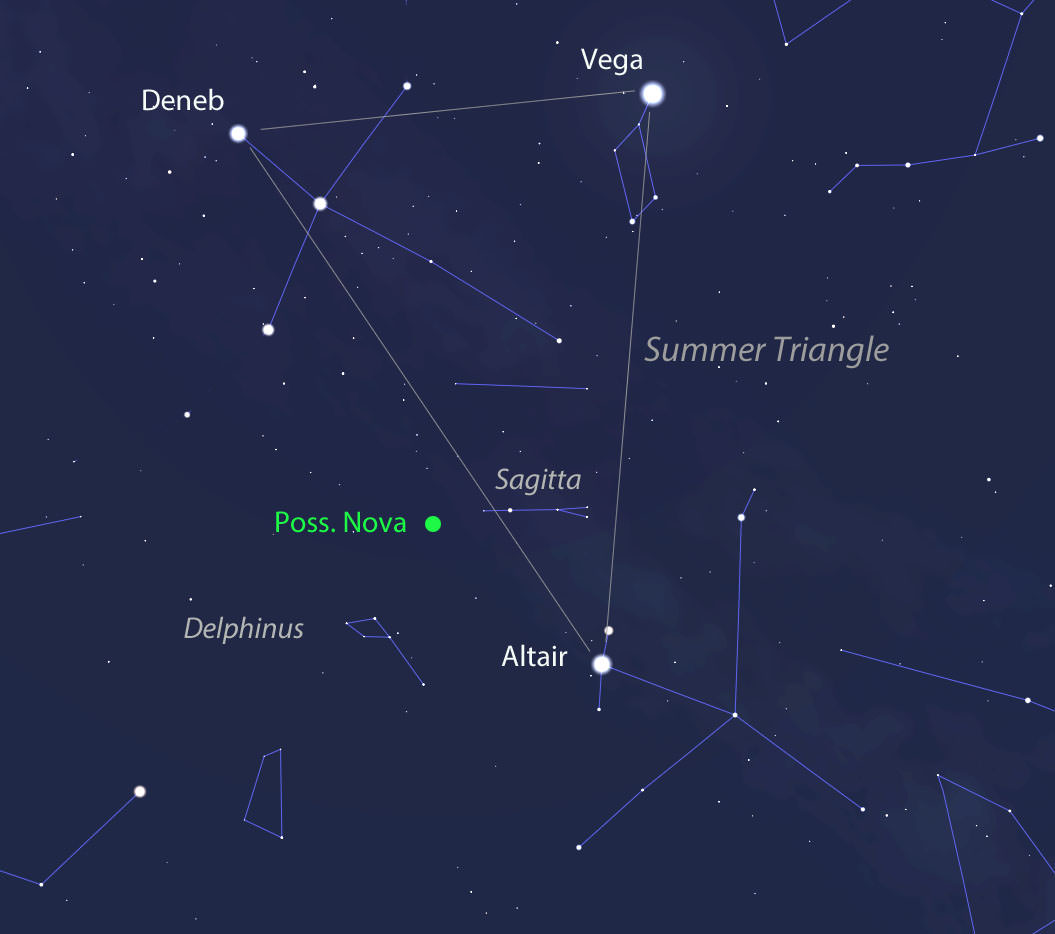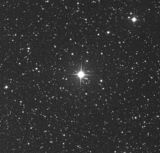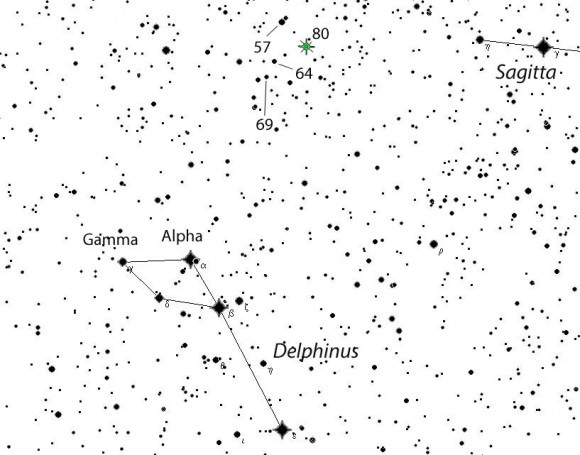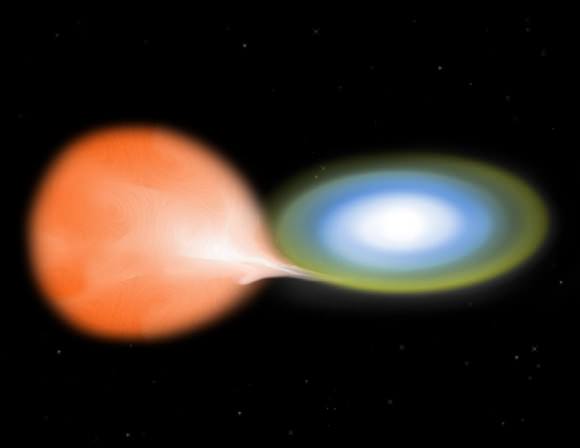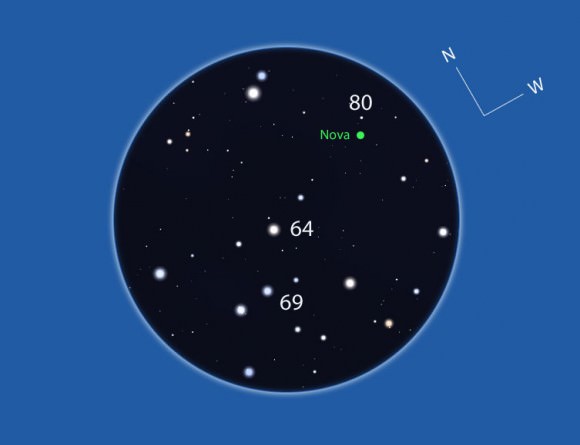Welcome to another edition of Constellation Friday! Today, in honor of the late and great Tammy Plotner, we take a look at “the Dolphin” – the Delphinus constellation. Enjoy!
In the 2nd century CE, Greek-Egyptian astronomer Claudius Ptolemaeus (aka. Ptolemy) compiled a list of all the then-known 48 constellations. This treatise, known as the Almagest, would be used by medieval European and Islamic scholars for over a thousand years to come, effectively becoming astrological and astronomical canon until the early Modern Age.
One of these is the northern constellation of Delphinus, which translates to “the Dolphin” in Latin. This constellation is located close to the celestial equator and is bordered by Vulpecula, Sagitta, Aquila, Aquarius, Equuleus, and Pegasus. Today, Delphinus is one of the 88 modern constellations recognized by the International Astronomical Union (IAU).
Name and Meaning:
According to classical Greek mythology, Delphinus represented a Dolphin. Once you “see” Delphinus, it is not hard to picture a small dolphin leaping from the waters of the Milky Way. According to Greek legend, Poseidon wanted to marry Amphitrite, a Nereid – or sea nymph. However, she hid from him. Poseidon sent out searchers, one of whom was named Delphinus.
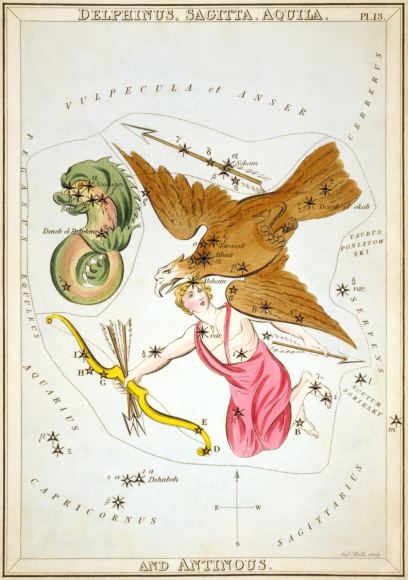
Can you guess who found Amphitrite and talked her into marrying? You got it. In gratitude, Poseidon placed Delphinus’ image among the stars. Not a bad call since the Nereids were known to live in the silvery caves of the deep and the silvery Milky Way is so nearby!
In the other version of the myth, it was Apollo – the god of poetry and music – who placed the dolphin among the constellations for saving the life of Arion, a famed poet and musician. Arion was born on the island of Lesbos and his skill with the lyre made him famous in the 7th century BC.
History of Observation:
The small constellation of Delphinus was one of the original 48 constellations complied by Ptolemy in the Almagest in the 2nd century CE. In Chinese astronomy, the stars of Delphinus are located within the Black Tortoise of the North (Bei Fang Xuán Wu) – one of the four symbols associated with the Chinese constellations. Delphinus was also recognized by some cultures in Polynesia – particularly the people of Pukapuka and the Tuamotu Islands.
Notable Objects:
Located very near the celestial equator, this kite-like asterism is comprised of 5 main stars and contains 19 stellar members with Bayer/Flamsteed designations. It’s primary star, Alpha Delphini (aka. Sualocin), is a multiple star system located 240 light years from Earth which consists of an aging subgiant of 2.82 Solar masses, and a companion that cannot be discerned because it is too close to its primary and too faint.
Next is Beta Delphini (aka. Rotanev), a pair of stars located approximately 101 light years from Earth. This system is comprised of a F5 III class blue-white giant and a F5 IV blue-white subgiant. If you don’t think astronomers have a sense of humor, then you better think again! Sualocin and Rotanev were both named by Italian astronomer Nicolaus Cacciatore, who simply spelled the Latin form of name (Nicolaus Venator) backwards as a practical joke!
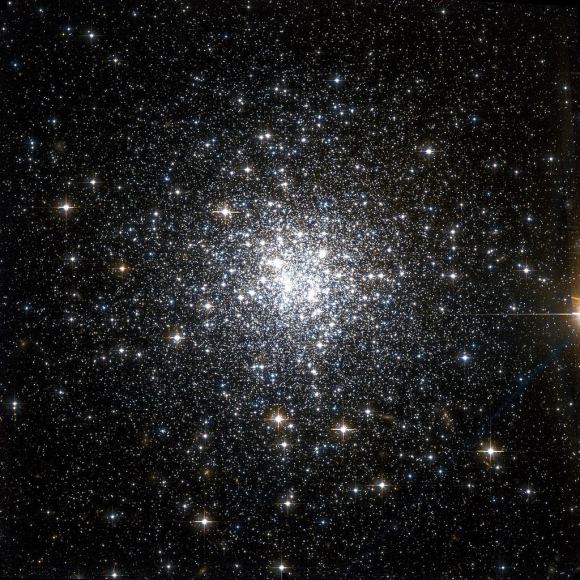
Epsilon Delphini (aka. Deneb Dulfim) is a spectral class B6 III blue-white giant star located about 358 light years from Earth. It’s traditional name comes from the Arabic ðanab ad-dulf?n, meaning “tail of the Dolphin”. Then there’s Rho Aquilae (aka. Tso Ke), a main sequence A2V white dwarf that is 154 light years distant. The star’s traditional name means “the left flag” in Mandarin, which refers to an asterism formed by Rho Aquilae and several stars in the constellation Sagittarius.
Delphinus is also home to numerous Deep Sky Objects, like the relatively large globular cluster NGC 6934. Located near Epsilon Delphini, this cluster is roughly 50,000 light years from Earth and was discovered by William Herschel on September 24th, 1785. Another globular cluster, known as NGC 7006, can be found near Gamma Delphini, roughly 137,000 light-years from Earth.
Delphinus is also home to the small planetary nebulas of NGC 6891 and NGC 6905 (the “Blue Flash Nebula”). Whereas the former is located near Rho Aquilae about 7,200 light years from Earth, the more notable Blue Flash Nebula (named because of its blue coloring) is located between 5,545 and 7,500 light-years from Earth.
Finding Delphinus:
Delphinus is bordered by the constellations of Vulpecula, Sagitta, Aquila, Aquarius, Equuleus and Pegasus. It is visible to all viewers at latitudes between +90° and -70° and is best seen at culmination during the month of September. Are you ready to start exploring Delphinus with binoculars? Then we’ll star with Alpha Delphini, whose name is Sualocin.
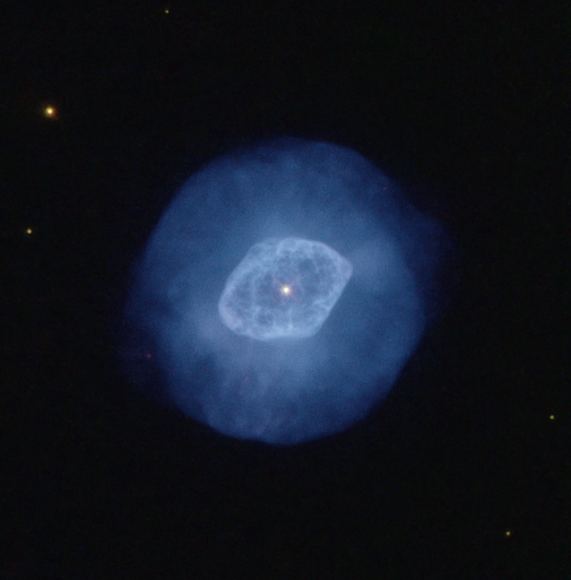
Sualocin has seven components: A and G, a physical binary, and B, C, D, E, and F, which are optical and have no physical association with A and G. The primary is another rapid rotator star, whipping around at about 160 kilometers per second at its equator – or about 70 times faster than our Sun.
What it’s classification is, is confusing as well. It might a hydrogen-fusing main sequence star, and it subgiant that might just be starting to evolve. Wherever Suolocin lay in the scheme of things, there’s no use trying to resolve out the companion star, because it’s only a fraction of a second of arc away. However, Alpha’s nearby star, still makes for an interesting binocular view!
Now let’s look at Beta Delphini. Are you still ready for a smile? Good old Cacciatore wasn’t done yet. Beta’s name is Rotanev, which is a reversal of his Latinized family name, Venator. Here again we have a multiple star system. Rotanev has five components. Stars A and B are are a true physical binary star, while the others are simply optical companions. This time it’s cool to get out the telescope and split them!
Beta Delphini is a fine target for testing quality optics. At 97 light years from Earth, Rotanev’s components are only separated by about one stellar magnitude and 0.65 seconds of arc. By the way, in case you were wondering…. Nicolaus Venator was the assistant of the one and only Giuseppe Piazzi!
Are you ready for a look at Gamma Delphini? It’s the Y shape on the map. Here we have a binary star very worthy of even a small telescope. Located about a 101 light-years away from Earth, Gamma is one of the best known double stars in the night sky. The primary is a yellow-white dwarf star, a the secondary is an orange subgiant star. Both are separated by about one stellar magnitude and a very comfortable 9.2 seconds of arc apart.

Regardless of their spectral class, take a look at how differently their colors appear in the telescope. While Gamma 1 (to the west) should by all rights be white, it often appears pale yellow orange, while Gamma 2 can appear yellow, green, or blue.
Before we put our binoculars away, let’s have a look at Delta Delphini – the figure “8” on our chart. Delta has no given name, but it has a partner. That’s right, it’s also a binary star. Its identical members are too close together to see separately and only by studying them spectroscopically were astronomers able to detect their 40.58 day orbital period.
Although Delta is officially classed as a type A (A7) giant star, it has a very strange low stellar temperature and an even stranger metal abundance. So what’s going on here? Chances are the Delta pair are really class F subgiants that have just ended core hydrogen fusion and both slightly variable. Do they orbit close to one another? You bet. So close, in fact, there orbit is only about the same distance as Mercury is from our Sun!
Now let’s take out the telescopes and have a look at NGC 7006 (RA 21h 1m 29.4 Dec +16 11′ 14.4) just a few arc minutes due east of Gamma. At magnitude 10, this small and powerful globular cluster might be mistaken for a stellar point in small telescopes at low power, for a very good reason… it’s very, very far away.
It is thought to be about 125 thousand light years from the galaxy’s core and over 135 thousand light years from us – far, far beyond the galaxy’s halo where it belongs. Even though it is a Class 1 globular, the most star dense in the Shapely?Sawyer classification system, and many observers comment that it looks more planetary nebula than it does a globular cluster!
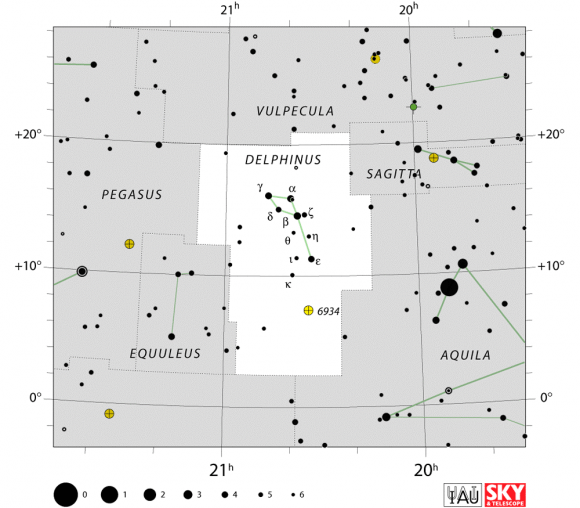
Try NGC 6934 instead (RA 20 : 34.2 Dec +07 : 24) . This 50,000 light year distant globular cluster is much brighter and larger, though at Class VIII it doesn’t even come close to having as much stellar concentration. Discovered by Sir William Herschel on September 24, 1785, you’ll enjoy this one just for the rich star field that accompanies it. For larger telescope, you’ll enjoy the resolution and the study in contrasts between these two pairs.
Now let’s take a look at 12th magnitude planetary nebula, NGC 6891 (RA 20 : 15.2 Dec +12 : 42). Here we have an almost stellar appearance, but get tight on that focus and up the magnification to reveal its nature. This is anything but a star. As Martin A. Guerrero (et al) indicated in a 1999 study:
“Narrow-band and echelle spectroscopy observations show a great wealth of structures. The bright central nebula is surrounded by an attached shell and a detached outer halo. Both the inner and intermediate shells can be described as ellipsoids with similar major to minor axial ratios, but different spatial orientations. The kinematical ages of the intermediate shell and halo are 4800 and 28000 years, respectively. The inter-shell time lapse is in good agreement with the evolutionary inter-pulse time lapse. A highly collimated outflow is observed to protrude from the tips of the major axis of the inner nebula and impact on the outer edge of the intermediate shell. Kinematics and excitation of this outflow provide conclusive evidence that it is deflected during the interaction with the outer edge of the intermediate shell.”
If you’d like a real, big, telescope galaxy challenge, try galaxy group NGC 6927, NGC 6928 and NGC 6930. The brightest is NGC 6928 at magnitude 13.5, (RA 20h 32m 51.0s Dec: +09°55’49”). None of them will be easy… But what challenge is?
We have written many interesting articles about the constellation here at Universe Today. Here is What Are The Constellations?, What Is The Zodiac?, and Zodiac Signs And Their Dates.
Be sure to check out The Messier Catalog while you’re at it!
For more information, check out the IAUs list of Constellations, and the Students for the Exploration and Development of Space page on Canes Venatici and Constellation Families.
Sources:


